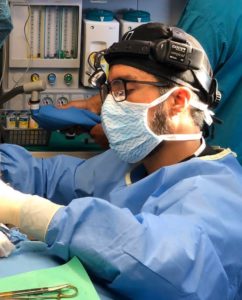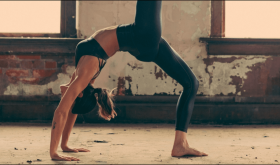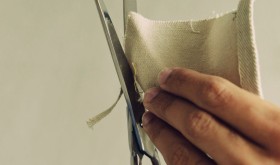
Cosmetic surgeon: Selfies drive patients to my door. But don’t go under the knife just yet.
I take pride in helping my patients look and feel their best. But ‘selfie addiction’ may point to underlying psychological concerns surgery can’t fix.
DARIA HAMRAH | OPINION CONTRIBUTOR | 7:00 am EDT August 14, 2019
Are you worried by the difference you see when you look in the mirror and when you scroll through your camera roll? It turns out you are not alone. Today, more than ever, I’m approached by young adults and millennials seeking facial cosmetic procedures. This trend, fueled by social media and selfies, is increasing — and that is not necessarily a reason for excitement for surgeons like me.
I’ve practiced in the Washington/Northern Virginia area for 10 years and have seen this shift in my own office, but it is also a trend my colleagues around the nation have observed in recent years. According to the 2018 survey by the American Academy of Facial Plastic and Reconstructive Surgery (AAFPRS), the average number of surgical procedures is up 47% since 2013 with a 22% increase in Botox injections compared with that same year, revealing that facial cosmetic procedures, whether surgical or nonsurgical, continue to surge.

That just means people are trying to look like the best versions of themselves and are seeking ways to stay young and healthy, right? Well, that’s not entirely the case anymore.
The selfie tsunami in cosmetic surgery
Today, facial rejuvenation is not the only reason why patients seek my services. Surgeons around the nation are noticing a gradual increase in the number of patients requesting the correction of minor flaws with very specific requests guided by the interpretation of their “selfies.”
In 2017, AAFPRS found that 55% of facial cosmetic surgeons saw patients who wanted to look better in selfies, up 13% from 2016. These are typically men and women in their 20s and 30s unhappy about their appearance in selfies that they took at odd angles. Sometimes their concerns are warranted, and their expectations seem reasonable. However, I become very concerned when they are very specific about an extremely minor flaw and are unable to show it using a simple hand mirror when asked what they’d like to change about their appearance.
And don’t get one on the cheap: I’m a plastic surgeon who won’t perform Brazilian Butt Lifts. They’re deadly.
Instead, they refer to a selfie taken at an unnatural angle and at arm’s length that completely distorts their appearance. It seems no one is using a mirror anymore but rather taking selfies to search for supposed flaws they can fixate on. This is largely fueled by constant comparisons of one’s selfies on social media with thousands of others in the game of who shot the best angle and who is getting the most “likes.”
Little do they know that selfies actively mislead people about how they look.
Smartphone cameras get better each year, but photos taken at arm’s length produce a “fish eye” effect: Whatever’s at the center of the photo is bigger, and things on the periphery are smaller. A study published in The Journal of the American Medical Association last year found that selfies taken 12 inches away make noses look 30% larger than they actually are.

GETTY IMAGES
I’ve found at least one way to overcome this challenge. In my practice, I use standardized photography for my consultations in order to show my patients a more objective view of their facial appearance. It also serves as a great teaching tool to demonstrate the distortions selfies can cause.
But the challenge is much greater than that.
Dissatisfaction is more than skin deep
Recent psychological studies suggest that the “selfie addiction” is a genuine medical condition and seems to be associated with low self-esteem, narcissism, loneliness and depression. The challenge for a surgeon is not only in trying to identify the patient’s perception of their flaws and correct them, we must also identify our patient’s expectations and true motivation to undergo a cosmetic procedure. This is important because, in some cases, the patient’s psychological problems might be aggravated or not improve, no matter how much we think their appearance improved after a procedure.
In many ways, I feel more like a psychologist than a surgeon as I try to avoid minimizing my patient’s concerns while also attempting to prevent the patient from landing in another doctor’s office and undergoing a procedure that might make them feel worse. This is a sensitive issue that, in some cases, should involve a psychological consultation.
Some surgeries you regret: I was a transgender woman for 8 years — time I can’t get back
Don’t get me wrong, I am passionate about helping people to look their best and build their confidence, whether it is through surgery or just talking to them during consultations. If their requests are reasonable and I am convinced that the request isn’t a result of a pathological obsession with a perceived flaw, known as body dysmorphic disorder, I gladly offer my services.
The requests range anywhere from complete facial rejuvenation like face-lifts, laser skin resurfacing, nose jobs and eyelid lifts, to nonsurgical “pre-juvenative” treatments like Botox and skin care for wrinkle reduction or fillers to balance their facial contours or pout up the lips. Of course, each procedure is performed in moderation and customized to the patient’s needs and ideals, but identifying the right motivation is the art.
I have no doubt that selfies provide inadequate feedback about one’s appearance and make people feel badly about themselves and their appearance, feeding an obsession that cannot be treated with surgery. Striking this balance is a challenge every surgeon should be aware of and every potential patient should be honest about.
Daria Hamrah is a facial cosmetic surgeon at NOVA SurgiCare in McLean, Virginia, and a fellow of the American Academy of Cosmetic Surgery.










